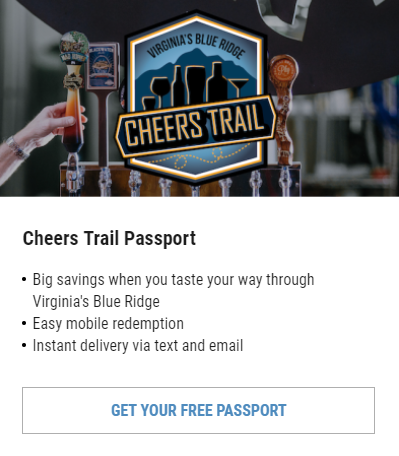History lovers will flock to Virginia’s Blue Ridge for a wide range of historic experiences spanning hundreds – if not thousands – of years.
From the experience of a born slave rising to become one of the most influential African-American educators of his time to the nation’s memorial to those lost on D-Day in 1944, there are interesting moments, occurrences, and people you need to meet.
Here are 15 spots history buffs have to visit in Virginia's Blue Ridge.
1. Blue Ridge Institute & Museum | Ferrum
The Blue Ridge Institute & Museum is a must see for anyone interested in folklore. In fact, it’s the official state center for Blue Ridge folklore, presenting traditional arts, crafts, music, and a living history farm.
2. Booker T. Washington National Monument | Hardy
Booker T. Washington was born into slavery in 1856, but overcame all odds to become the first principal of the Tuskegee Normal and Industrial School, an accomplished orator and writer, and a trusted advisor to Presidents of the United States of America.
At the Booker T. Washington National Monument in Hardy, visitors see the log cabin where Dr. Booker T. Washington was born and raised until the age of 9. Learn about his life as the son of the plantation cook from interpreters portraying residents of the Burroughs Farm.
Genealogy & Community History
Genealogical research is at your fingertips when you visit the historical societies of Virginia’s Blue Ridge. Trace your family tree at the (3.) Botetourt County Historical Society & Museum in Fincastle, the (4.) Franklin County Historical Society in Rocky Mount, the (5.) Salem Museum in Salem, or the (6.) Vinton History Museum in Vinton.
The Great Wagon Road, known as the Wilderness Road: Virginia’s Heritage Migration Route, led Scots-Irish and German settlers westward. Those immigrants settled the communities of Virginia’s Blue Ridge. Visit each community museum to appreciate the details of how each town was established.
7. Harrison Museum of African American Culture | Roanoke
The Harrison Museum of African American Culture is dedicated to preserving the oral and material stories of the black communities of Roanoke and Virginia’s Blue Ridge. Visit the museum to see new exhibits and special events every few months, ranging from photography and hats to staged readings and jazz brunches. Make a note to check your calendar for the fall as the Henry Street Heritage Festival celebrates African American heritage with music, art, and dance.
8. Historic Smithfield Plantation | Blacksburg
A one-time social and political center for Southwest Virginia, the 1774 Smithfield Plantation was home to five generations of the Preston Family. Today it is the finest example of pre-Revolutionary War architecture in Virginia’s Blue Ridge.
When you visit Smithfield Plantation, you’ll learn about the significance of the structure as it relates to westward settlement, and the influence the Preston’s had on politics and education.
9. History Museum of Western Virginia & (10.) O. Winston Link Museum | Roanoke
Two museums in one! A stop at the History Museum of Western Virginia and the O. Winston Link Museum yields a tremendous overview of the beginnings and growth of Roanoke and the surrounding region. Housed in the old N&W passenger train station, the venue for the museums tells an additional tale. To take that part of the story a bit farther, you’ll want to incorporate a swing through the Virginia Museum of Transportation.
11. Virginia Museum of Transportation | Roanoke
One of the coolest places in Roanoke is the Virginia Museum of Transportation. Not only can you climb aboard the trains, but you can see running trains breeze by outside. Steam, diesel, and electric trains are on display here, as are surprises like automobiles and space craft. You didn’t see that coming, did you?
12. National D-Day Memorial | Bedford
On June 6, 1944, nearly 2,500 American soldiers were killed when Allied Forces launched Operation Overlord and advanced onto the beaches of Normandy. Bedford, Virginia lost 19 that day. They were dubbed “The Bedford Boys.” Per capita, Bedford suffered the greatest loss of life that day. Visit the National D-Day Memorial to learn the history of that day, those soldiers, and to solemnly remember the past.
13. Thomas Jefferson’s Poplar Forest | Forest
The private summer retreat of President Thomas Jefferson, Poplar Forest is an active archaeological dig site – a rare treat for anyone to witness – and considered to be Jefferson’s most perfect architectural creation. The landscape and building restoration efforts have drawn enthusiasts from around the world. Be one of them!
14. Self-Guided Walking Tours: Downtown Roanoke | Salem | Fincastle
You’ll always learn more and appreciate more when you get out of your car and pound the pavement on two feet. Get an incredible overview of Roanoke, Salem, and Fincastle when you not only visit the museums they have to offer, but also walk their historic streets.
15. Natural Bridge State Park | Natural Bridge
Virginia’s most renowned natural wonder is the 215-foot high limestone arch known as Natural Bridge. The Monacans sought shelter beyond it. A young George Washington surveyed it, and Thomas Jefferson owned it. If you’ve never walked the path below this awesome formation, you’re missing one of Virginia’s top bucket list stops.
Lodging: The Hotel Roanoke & Conference Center | Roanoke
No other accommodation in Roanoke will tell the history of the city better than The Hotel Roanoke & Conference Center. Built in 1882, this gem on the National Register of Historic Places is not only a must-see, but a must-stay.
Map of Locations
Show us how you soak in the history of Virginia’s Blue Ridge when you share your travels on social media. Be sure to tag your moments with #BlueRidgeDay.



















